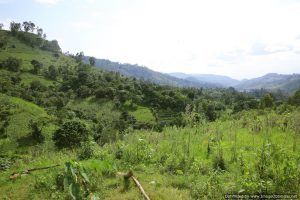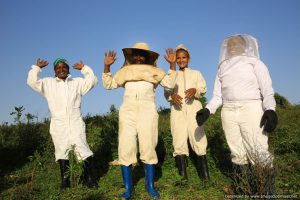OUR STORY
THE STORY BEHIND OUR LOGO
We chose a woman carrying a traditional “kanta” harvest bag, characteristic of the Bench Maji region and symbol of coffee as a livelihood source. The six red cherries lining the top of the basket represent the six indigenous people of the region: Bench, Sheko, Meenit, Dizi, Surma & Zilmamo. The coffee tree branch above her head symbolizes coffee as a giver of shelter from life’s difficulties; she grasps it with both hands, illustrating Bench Maji’s hard-working ethos. Last but not least, we chose a woman to represent our farmer community because coffee is traditionally grown and cared for by women; yet in terms of income it typically benefits only men. BMCFCU has a mission to change this narrative and empower women from the coffee farming community in terms of skills, prospects and income.




